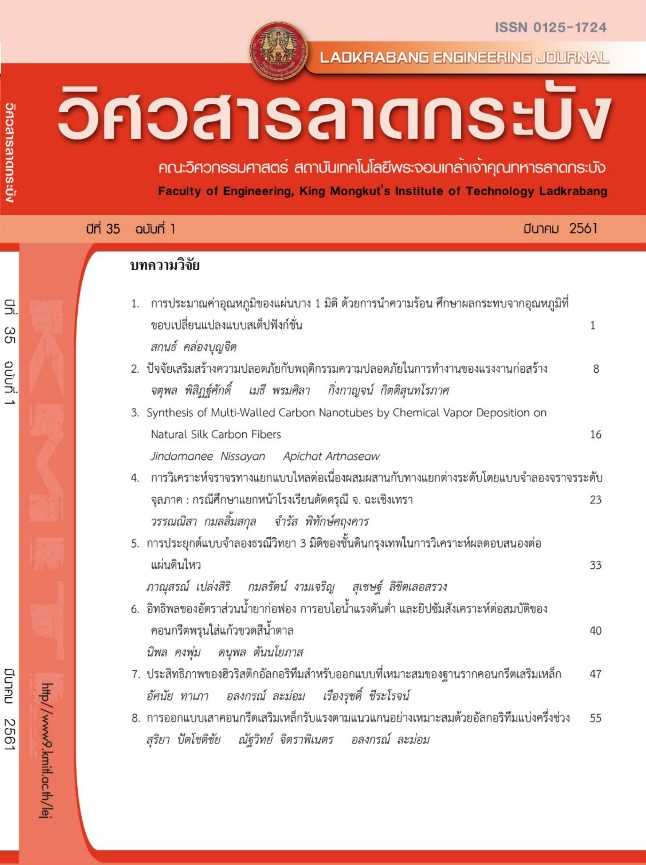Traffic Operational Analysis of Continuous Flow Urban Interchange Using Micro Simulation Modeling Technique : A Case Study of Dat Daruni School , Chachoengsao
Keywords:
Travel Time, queue, delay, speed, Continuous Flow Intersection, Single-Point Urban Interchange, Micro Simulation Model VISSIMAbstract
At present, the problem about the traffic jam at the intersection is one of the most important that need to be solve immediately, by applying the new combination of the Continuous Flow Intersection (CFI) with Single-Point Urban Interchange (SPUI) and it is also called as Continuous Flow Urban Intersection (CFUI). This technique is very effective in solving the problem of traffic jam and it is even better than building only Single-Point Urban Interchange. This research is for resolve and improving the traffic at the intersection near the Dat Daruni school because in that area is a Single-Point Urban Interchange and now there is a problem about the traffic jam in the urgent time. So they will renovate to combine between Continuous Flow Intersection(CFI) and Single - Point Urban Interchange (SPUI) and this technique call Continuous Flow Urban Intersection (CFUI) to compare the traffic before and after renovating at the intersection of queue, delay ,speed and travel time by using micro - simulation (VISSIM). This design is does not only reduce the problem of the traffic jam but also reduce the conflict at the main intersection. The result of study show that, applying this system can adjust the problem of traffic jam at the intersection and increase the efficiency of the intersection in the future.
References
R. Jaganatha and J.G. Bared, “Design and Operation Performance of Crossover Displaced Left Turn Intersections,” Transportation Research Record: Journal of Transportation Research Board, No 1881, TRB, National Research Council, Washington D.C., pp. 1-10 , 2004.
J. Pitaksringkarn, “Measures of Effectiveness for Continuous Flow Intersection: A Maryland Intersection Case Study,” ITE 2005 Annual Meeting and Exhibit Compendium of Technical Paper, ITE,Washington D.C.,2005.
S.Cheong, S. Rahwanji and G. Chang “Comparison of Three Unconventional Arterial Intersection Design : Continuous Intersection, Parallel Flow Intersection, and Upstream Signalized Crossover,” Paper presented at the 11th International IEEE Conference on Intelligent Transportation System, Beijing, China, October, 2008.
Federal Highway Administration (FHWA). (April 2010) Alternative Intersections / Interchanges: Informational Report (AIIR)
American Association of state Highway and Transportation officials (ASSHTO), 2004
J. Pitaksringkarn and C. Ratanamahatana, “ A CFI Design Integration for a Single -Point Urban Interchange Traffic Operation Improvement, 2008.
PTV Planung Transport Verkehr AG [PTV] VISSIM 7.0, User Manual, PTV, Karlsruhe, 2014
Downloads
Published
How to Cite
Issue
Section
License
The published articles are copyrighted by the School of Engineering, King Mongkut's Institute of Technology Ladkrabang.
The statements contained in each article in this academic journal are the personal opinions of each author and are not related to King Mongkut's Institute of Technology Ladkrabang and other faculty members in the institute.
Responsibility for all elements of each article belongs to each author; If there are any mistakes, each author is solely responsible for his own articles.






